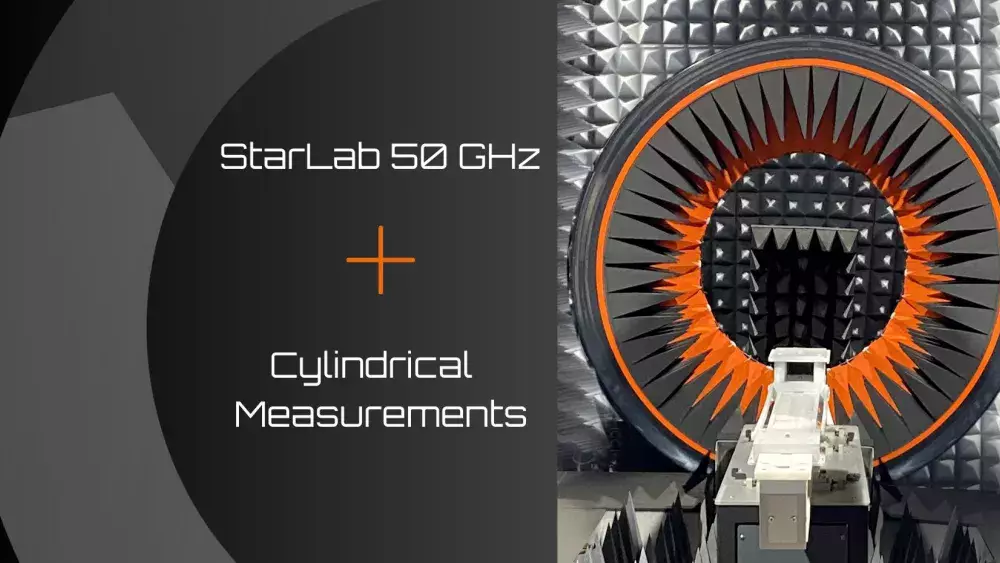
Published on 15/06/2023 16:00:00
Linear array antennas are composed of multiple antenna elements arranged in a straight line. These elements work together to form a combined radiation pattern, resulting in various benefits such as increased directivity, beamforming capabilities, and improved signal reception or transmission in a specific direction. Linear arrays are used in various applications such as wireless communications, radar systems, satellite communications, and radio astronomy.
While these antenna arrays can be tested in various near-field test geometries, with dimensions usually much longer than wide, they are particularly well-suited for cylindrical near-field measurements. Cylindrical test configurations simplify and optimize both time and space for the measurement of linear arrays.
The MVG StarLab 50 GHz has recently been upgraded to perform cylindrical near-field measurements in addition to spherical measurements. Linear array antennas* operating at frequencies from 650 MHz to 50 GHz can now be tested while minimizing time and space requirements.
In the StarLab 50 GHz, the antenna is positioned horizontally and passes through the electronically scanned probe array on a linear positioner. This cylindrical set-up not only allows for a smaller anechoic chamber and test system, it also reduces the number of required measurement points to complete a full test.
With the patented multi-probe electronic scanning and unlimited sampling technology built into the arch of the StarLab 50 GHz, mechanical movement of the DUT are minimized while speed and accuracy of measurements are maximized.
* max dimensions: 270 x 47 cm

